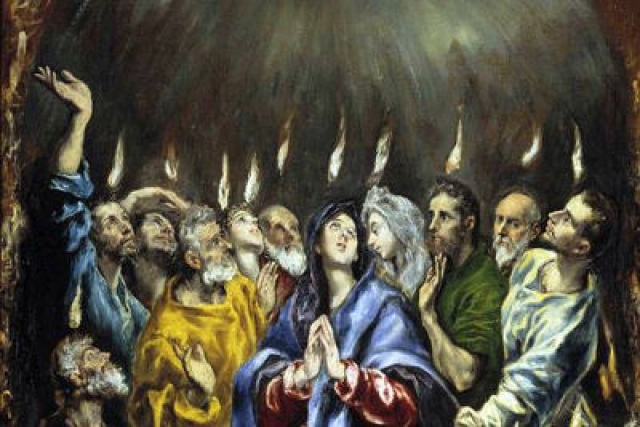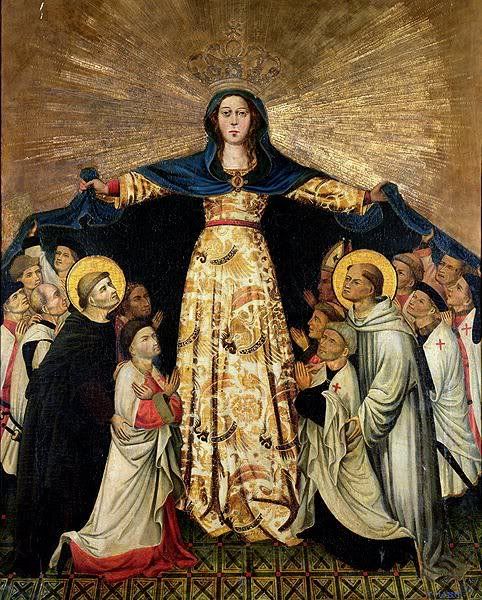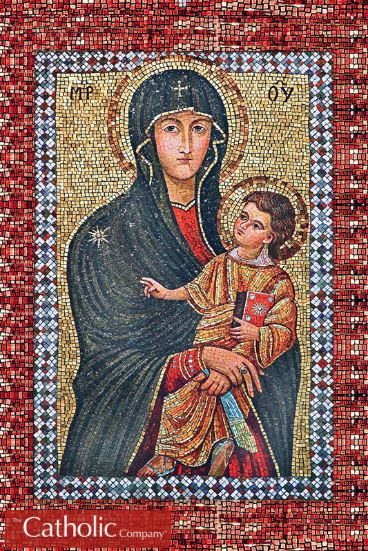Ever Ancient, Ever New: A New Feast For Mary, Mother of the Church
May 18, 2018 by Ashley Olik
The Monday after Pentecost is a Marian feast day.
Didn’t you know?
It’s alright if you didn’t. After all, Pope Francis only just declared the feast of Mary, Mother of the Church, to be a permanent memorial in March of 2018.
Why Mary, Mother of the Church?
Since the earliest days of Christian history, Catholics have referred to the Church—and to Mary—as "Our Mother."
In the 3rd century, an African writer named Tertullian penned the breathtaking phrase that spoke of Mary and the Church as the “New Eve.” Just as Eve was the mother of all the living (which the name “Eve” literally means) so Our Lady and the Church are our spiritual mother in the Mystical Body of Christ.
 El Greco - Pentecost
El Greco - Pentecost
Where else do we see this?
Proper focus on Mary as the gentle-yet-strong Mother of the Church has surfaced most strongly when the Church needed it most.
One such period was the 5th century.
At the beginning of the 400s, Marian theology was viciously debated, especially by Nestorian, who attacked the concept of Mary as Mother of God. The declaration of Mary as the Mother of God was an important part of the ensuing Council of Ephesus in 431 AD.
Later in the same century, St. Leo the Great spoke about the connection between Our Lady’s motherhood of Christ and the founding of the Church.
In the same vein, St. Augustine wrote:
“[Mary] is clearly the Mother of his members; that is, of ourselves, because she cooperated by her charity, so that faithful Christians, members of the Head, might be born in the Church. As for the body, she is the Mother of its Head…Mary gave birth to our Head; the Church gave birth to you. Indeed, the Church also is both virgin and mother, mother because of her womb of charity, virgin because of the integrity of her faith and piety.”

Another wave of emphasis on this connection can be found in the recent 20th century:
- Mary’s motherhood served as the focus for the central chapter of Lumen Gentium, a powerhouse Dogmatic Constitution of the Church written in 1964
- At the end of the Second Vatican Council in 1965, Blessed Pope Paul VI formally declared Mary to be the “Mother of the Church"
- In 1975, a votive Mass was created for “Blessed Mary Mother of the Church”
- In 1980, Pope St. John Paul II added the title of Mary, Mother of the Church, to the beautiful Litany of Loretto, which is commonly recited at the end of the rosary
Why Pope Francis?
The idea of Our Lady and the Church as Mother are especially close to the heart of Pope Francis, who spoke about this in a powerful off-the-cuff reflection, one that he delivered to the cardinals just before the very electoral conclave that would elect him Pope.
In that message, Pope Francis spoke of the Church as needing a leader who would help Her to “be the fecund mother who lives ‘by the sweet and comforting joy of evangelizing.’”
Pope Francis has shown his love for Mary, our dedicated and tender Mother, through his devotion to Our Lady Undoer of Knots: a devotion which he effectively brought out of obscurity and into the light of public knowledge and widespread veneration.
Why is this happening now?
In an official decree published by the Congregation for Divine Worship and the Discipline of the Sacraments, Cardinal Robert Sarah reflects: “Mary is the mother of the members of Christ, because with charity she cooperated in the rebirth of the faithful into the Church...the birth of the Head is also the birth of the body, thus indicating that Mary is at once Mother of Christ, the Son of God, and mother of the members of his Mystical Body, which is the Church.”
Sarah wrote that with the institution of this celebration, the Pope hopes to “encourage the growth of the maternal sense of the Church in the pastors, religious and faithful, as well as a growth of genuine Marian piety.”
 A mosaic of Mary, Mother of the Church in St. Peter's Square (CNS photo/Paul Haring)
A mosaic of Mary, Mother of the Church in St. Peter's Square (CNS photo/Paul Haring)
Because the memorial of Mary, Mother of the Church, will always fall on the Monday after Pentecost, Sarah added that the new feast day will “help us to remember that growth in the Christian life must be anchored to the Mystery of the Cross, to the oblation of Christ in the Eucharistic Banquet and to the Mother of the Redeemer and Mother of the Redeemed, the Virgin who makes her offering to God.”
Mary, Mother of the Church, pray for us!
 For breathtaking Catholic items featuring the image of Mary, Mother of the Church, click the image above!
For breathtaking Catholic items featuring the image of Mary, Mother of the Church, click the image above!
Are you excited about the new feast day?
How has Mary shown herself a mother to you?
Share your thoughts with us in the comments below!






